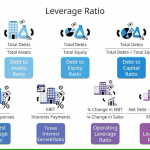Are you considering investing in SPACs or IPOs? While these investment opportunities can be lucrative, it’s important to be aware of the tax implications involved. In this article, we will explore tax optimization strategies specifically tailored for SPAC and IPO investments.
Understanding SPAC and IPO Investments
Before diving into tax optimization strategies, let’s first understand what SPACs and IPOs are. A Special Purpose Acquisition Company (SPAC) is a publicly-traded company created with the sole purpose of merging with or acquiring another company.
On the other hand, an Initial Public Offering (IPO) is the process by which a private company goes public by offering shares of its stock to the general public.
Importance of Tax Optimization for SPAC and IPO Investments
When it comes to SPACs and IPOs, understanding the tax landscape is essential for optimizing your investment returns. By implementing the right tax strategies, you can minimize your tax liabilities and maximize your after-tax profits. Neglecting the tax implications can lead to significant losses and missed opportunities.
Tax optimization is crucial in investing, particularly for serious investors, as it can significantly impact investment returns and long-term wealth accumulation. By strategically managing tax implications through techniques such as tax-efficient investment vehicles, asset location strategies, and tax-loss harvesting, investors can minimize tax liabilities and retain more of their investment gains.
This not only enhances after-tax returns but also preserves capital for compounding, leading to higher overall wealth growth.
Moreover, effective tax planning aligns with prudent risk management and wealth preservation, allowing serious investors to enhance their investment efficiency, maintain portfolio resilience, and achieve their long-term financial goals while mitigating unnecessary tax burdens and maximizing after-tax wealth accumulation.
Tax Implications of SPAC and IPO Investments
SPAC and IPO investments come with various tax implications. One key aspect to consider is the holding period. The holding period determines whether the gains from your investment will be taxed as short-term or long-term capital gains. Short-term gains are taxed at higher rates compared to long-term gains.
Additionally, the type of income received from SPAC and IPO investments, such as dividends or capital gains, also affects the tax treatment.
To optimize your tax position when investing in SPACs, consider the following strategies. First, determine the optimal holding period based on your investment goals and tax situation.
By holding onto your investment for at least one year, you may qualify for lower long-term capital gains tax rates. Additionally, consider structuring your investment through tax-efficient vehicles like a self-directed IRA or a Roth IRA. These accounts offer tax advantages that can help maximize your returns.
When it comes to IPO investments, tax optimization strategies can also play a crucial role. One effective strategy is to carefully time your investment. By understanding the lock-up period, which is the period during which insiders are restricted from selling their shares, you can plan your investment accordingly. Additionally, consider utilizing tax-efficient investment vehicles like a 401(k) or an Individual Retirement Account (IRA) to minimize your tax liabilities.
Working with a Tax Advisor for SPAC and IPO Investments
Navigating the tax complexities of SPAC and IPO investments can be challenging. That’s why it’s advisable to work with a tax or financial advisor who specializes in investment taxation.

Working with a tax advisor for SPAC and IPO investments is highly recommended due to the complex and nuanced tax implications associated with these investment vehicles. Both SPACs and IPOs present unique tax considerations, such as the treatment of capital gains, stock options, and potential tax liabilities arising from share transactions.
A tax advisor can provide valuable guidance on structuring investments to optimize tax efficiency, navigating the tax consequences of stock sales, and ensuring compliance with regulatory requirements.
Additionally, they can offer strategic advice on managing tax implications related to lock-up periods, share dilution, and any special tax treatment applicable to SPAC or IPO investments.
By leveraging the expertise of a tax advisor, investors can proactively manage their tax exposure, maximize after-tax returns, and make well-informed investment decisions aligned with their overall tax and financial objectives.
Basically, a tax advisor can help you understand the tax implications, identify tax optimization opportunities, and ensure compliance with tax laws. Their expertise can save you time, money, and potential headaches in the long run.
While tax optimization strategies can offer significant benefits, it’s important to avoid common mistakes that could result in unfavorable outcomes. One mistake is failing to plan ahead and consider the tax implications before making investment decisions.
Another mistake is overlooking the impact of state and local taxes, which can vary depending on where you reside. By being proactive and diligent in your tax planning, you can avoid these pitfalls.
Resources and Tools for Tax Optimization in SPAC and IPO Investments
To further assist you in your tax optimization journey, here are some valuable resources and tools. Online tax calculators can help you estimate your potential tax liabilities based on different investment scenarios. Tax planning software can provide insights into tax-efficient investment strategies. Additionally, tax publications and educational materials can help you stay up to date with the latest tax regulations and opportunities.
Tax Optimization in Investing
Whether you are a seasoned investor or just starting out, understanding how taxes can impact your investments is essential for long-term success. By implementing these strategies, you can potentially increase your after-tax returns and keep more of your hard-earned money in your pocket.
Understanding Tax Optimization in Investing
Tax optimization in investing refers to the process of strategically managing your investments to minimize your tax liability and maximize your after-tax returns. It involves utilizing tax-saving strategies and investment vehicles that offer tax advantages. By understanding and implementing these strategies, you can potentially save a significant amount of money in taxes over the long term.
Tax optimization for expats with significant investments in the global market is especially critical due to the potential complexities of international tax laws and regulations.
Expatriates often face unique tax challenges, including issues related to residency, foreign income, and cross-border investment taxation. Effective tax optimization strategies for expats may involve utilizing tax treaties, foreign tax credits, and expat-specific investment vehicles to minimize tax liabilities on global investment income.
Additionally, strategic asset location and investment structuring can be employed to optimize tax efficiency while ensuring compliance with both home country and host country tax requirements.
Given the intricate nature of expat taxation, seeking professional guidance from tax advisors with expertise in international tax planning is paramount to navigating the complexities of global investment taxation, mitigating tax risks, and maximizing after-tax investment returns for expatriate investors.
Tax optimization plays a crucial role in investment strategies as it can significantly impact your overall returns. By minimizing your tax liability, you can keep more of your investment gains and increase your after-tax returns. This can make a substantial difference, especially over a long-term investment horizon. Neglecting tax optimization can result in paying unnecessary taxes and potentially reducing your investment gains.
Tax-Efficient Investment Vehicles
One of the key aspects of tax optimization in investing is choosing tax-efficient investment vehicles. These are investment options that are structured in a way to minimize the tax burden on investors.
For example, investing in low-cost index funds or exchange-traded funds (ETFs) can be tax-efficient compared to actively managed funds. This is because index funds and ETFs generally have lower turnover, resulting in fewer taxable events and potentially lower capital gains distributions.
Another tax-efficient investment vehicle is municipal bonds. Municipal bonds are issued by state and local governments and offer tax-exempt interest income. Investing in municipal bonds can be advantageous for investors in higher tax brackets as it allows them to earn tax-free income.
Additionally, investing in tax-managed funds can be a smart choice for tax optimization. These funds are managed with a focus on minimizing taxable distributions, which can help investors reduce their tax liability.
Tax-Advantaged Accounts for Investing
Utilizing tax-advantaged accounts is another effective strategy for tax optimization in investing. These accounts offer tax benefits that can help investors minimize their tax liability.
Some popular tax-advantaged accounts include Individual Retirement Accounts (IRAs), 401(k) plans, and Health Savings Accounts (HSAs).
Contributions made to traditional IRAs and 401(k) plans are typically tax-deductible, meaning you can reduce your taxable income by contributing to these accounts. The earnings in these accounts grow tax-deferred until withdrawal, providing potential tax savings.
Roth IRAs and Roth 401(k) plans, on the other hand, offer tax-free withdrawals in retirement. While contributions to these accounts are not tax-deductible, qualified withdrawals, including earnings, are tax-free. Investing in a Roth account can be beneficial for tax optimization, especially if you expect to be in a higher tax bracket during retirement.
HSAs are another tax-advantaged account that can be utilized for tax optimization. Contributions made to an HSA are tax-deductible, and the earnings grow tax-free. Withdrawals from an HSA are also tax-free if used for qualified medical expenses.
Strategies for Minimizing Capital Gains Taxes
Capital gains taxes can eat into your investment returns, but there are strategies you can implement to minimize them. One such strategy is to hold investments for more than a year to qualify for long-term capital gains rates. Long-term capital gains rates are generally lower than short-term capital gains rates, which can result in significant tax savings.
Another strategy is to offset capital gains with capital losses through a technique known as tax-loss harvesting. Tax-loss harvesting involves selling investments that have experienced a loss to offset capital gains. By strategically harvesting losses, you can reduce your overall tax liability.
Additionally, consider timing your capital gains and losses to optimize your tax situation. For example, if you have capital gains from one investment, you can offset it by selling another investment at a loss. This can help you minimize your taxable gains and potentially lower your tax bill.
Tax-Loss Harvesting and Its Benefits
Tax-loss harvesting is a popular strategy used for tax optimization in investing. This strategy involves selling investments that have declined in value to realize capital losses. These losses can then be used to offset capital gains and potentially reduce your tax liability.
One of the key benefits of tax-loss harvesting is the ability to maintain your investment positions while still realizing tax benefits. By selling investments that have declined in value, you can generate losses without completely exiting the market. This allows you to stay invested and potentially benefit from future market gains while optimizing your taxes.
It’s important to note that tax-loss harvesting has certain rules and limitations. The IRS imposes a “wash-sale” rule, which prevents you from claiming a loss if you repurchase the same or substantially identical investment within 30 days. Therefore, it’s crucial to carefully consider the timing of your transactions to ensure compliance with the wash-sale rule.
Considerations for Tax Optimization in Retirement Accounts
When it comes to tax optimization in retirement accounts, there are a few considerations to keep in mind. First, consider the type of retirement account you have. Traditional retirement accounts, such as traditional IRAs and 401(k) plans, offer tax-deductible contributions, but withdrawals in retirement are subject to ordinary income tax.

On the other hand, Roth retirement accounts, such as Roth IRAs and Roth 401(k) plans, offer tax-free withdrawals in retirement but do not provide an immediate tax deduction for contributions. Depending on your current and future tax situations, you may choose to contribute to one or both types of retirement accounts for tax optimization purposes.
Another consideration is the required minimum distributions (RMDs) that apply to traditional retirement accounts. Once you reach a certain age, typically 72, you are required to withdraw a minimum amount from your traditional retirement accounts each year.
These distributions are subject to ordinary income tax. Proper planning and understanding of RMD rules can help you optimize your tax situation in retirement.
The Role of Dividends and Taxes in Investment Planning
Dividends play an important role in investment planning, and understanding the tax implications can help with tax optimization. Dividends are typically taxable, and the tax rate depends on whether they are qualified or non-qualified dividends.
Qualified dividends are subject to long-term capital gains rates, which are generally lower than ordinary income tax rates. Non-qualified dividends, on the other hand, are taxed at ordinary income tax rates. By focusing on investments that offer qualified dividends, you can potentially minimize your tax liability and optimize your after-tax returns.
Additionally, consider the impact of dividend reinvestment plans (DRIPs) on your taxes. DRIPs allow you to automatically reinvest your dividends to purchase additional shares of the same investment. While DRIPs can be a convenient way to grow your investments, they can also trigger taxable events. Be mindful of the potential tax consequences when participating in a DRIP.
Seeking Professional Advice for Tax Optimization in Investing
As mentioned above, navigating the complexities of tax optimization in investing can be challenging, and seeking professional advice can be beneficial. A qualified tax advisor or financial planner can help you develop a tax-efficient investment strategy tailored to your specific needs and goals.
A professional can provide valuable insights, help you understand the tax implications of different investment decisions, and guide you through the process of optimizing your taxes. They can also assist in staying updated on changes in tax laws and regulations that may impact your investment taxes.
Conclusion: The Long-Term Benefits of Tax Optimization in Investing
Tax optimization in investing is a key component of a successful investment strategy. By understanding and implementing tax-saving strategies, utilizing tax-efficient investment vehicles, and maximizing the benefits of tax-advantaged accounts, you can potentially increase your after-tax returns and keep more of your hard-earned money.
Strategies such as tax-loss harvesting, timing capital gains and losses, and considering the tax implications of dividends can further enhance your tax optimization efforts. Additionally, seeking professional advice can provide valuable guidance and ensure you make informed decisions.
Remember, the benefits of tax optimization in investing are not limited to immediate tax savings. Over time, the accumulated tax savings can compound and have a significant impact on your overall investment returns.
In conclusion, understanding and implementing tax optimization strategies are essential for maximizing your returns when investing in SPACs and IPOs. By carefully considering factors such as the optimal holding period, tax-efficient investment vehicles, and working with a tax advisor, you can minimize your tax burden and increase your after-tax profits. Stay informed, plan ahead, and make the most of these investment opportunities from a tax standpoint.
Investing in SPACs and IPOs can be a rewarding endeavor, but it’s crucial to approach it with a comprehensive tax optimization strategy. By doing so, you can ensure that you are making informed decisions and maximizing your potential returns. So, embark on your tax optimization journey today and make the most of these investment opportunities.






